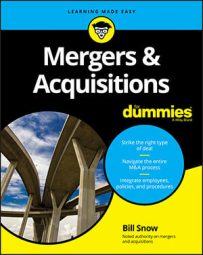In an M&A deal, the venerable earn-out is a favorite deal component for Buyers because it allows the Seller to prove the company’s profitability. If the company achieves the goals Buyer and Seller agree to, Seller gets the earn-out. Keeping the earn-out metric simple and easy to measure reduces the chances of a dispute down the line.
M&A earn-out based on revenues
Basing the earn-out on revenues is usually the most straightforward approach. When structuring a revenue based earn-out, remember that earn-outs shouldn’t be an all-or-nothing proposition. If the company falls short of the earnings goal, perhaps the Seller is still eligible for some of the earn-out. A dollar-for-dollar reduction in the earn-out based on how far short of the projection the company falls is often the solution.
Say the earn-out was worth $2 million if the company achieved a certain revenue goal. If the revenue was $1.5 million short of that goal but the earn-out didn’t require all-or-nothing success, Seller still receives $500,000 ($2 million minus $1.5 million).
M&A earn-out based on earnings
This option is a cousin to the earn-out based on revenue. It functions exactly the same, except that the metric for the earn-out is based on some measurement of earnings. Both sides need to very precisely determine how they’ll measure earnings (EBITDA, net income, and so on).
Sellers should be wary of Buyers applying some overhead from the parent company’s books to the acquired company’s books. This accounting treatment may artificially lower the acquired company’s earnings (because now expenses the company didn’t incur are eating up its profits), thus reducing or eliminating the Seller’s earn-out.
M&A earn-out based on gross profit
Another metric for an earn-out is to base the earn-out on the business’s gross profit, or its profit after deducting the cost of sales but before deducting operating expenses. This method can be a great way to settle a valuation difference in an environment where pricing is falling (thus resulting in lower revenue) and the cost of sales is falling, too.
Because the earn-out takes the profit before operating expenses, this technique eliminates the risk of Buyer adding applied overhead to the company’s operating expenses.
M&A earn-out based on a future year valuation
A multiyear earn-out may result in Seller not earning all the available money in some of the years. Basing the final valuation on a future year and providing Seller with advances against that future-year valuation helps eliminate that occurrence.
Effectively, this strategy gives Seller a make-up clause. If the company falls short of its goals in the early years, Seller can still get 100 percent of the earn-out as long as the company achieves the goals in the final year.
Sellers, make sure the purchase agreement defines all advance payments as nonrefundable. Doing so prevents Buyer from trying to reclaim some of the advance payments if the company falls short of the final goal of the earn-out.

